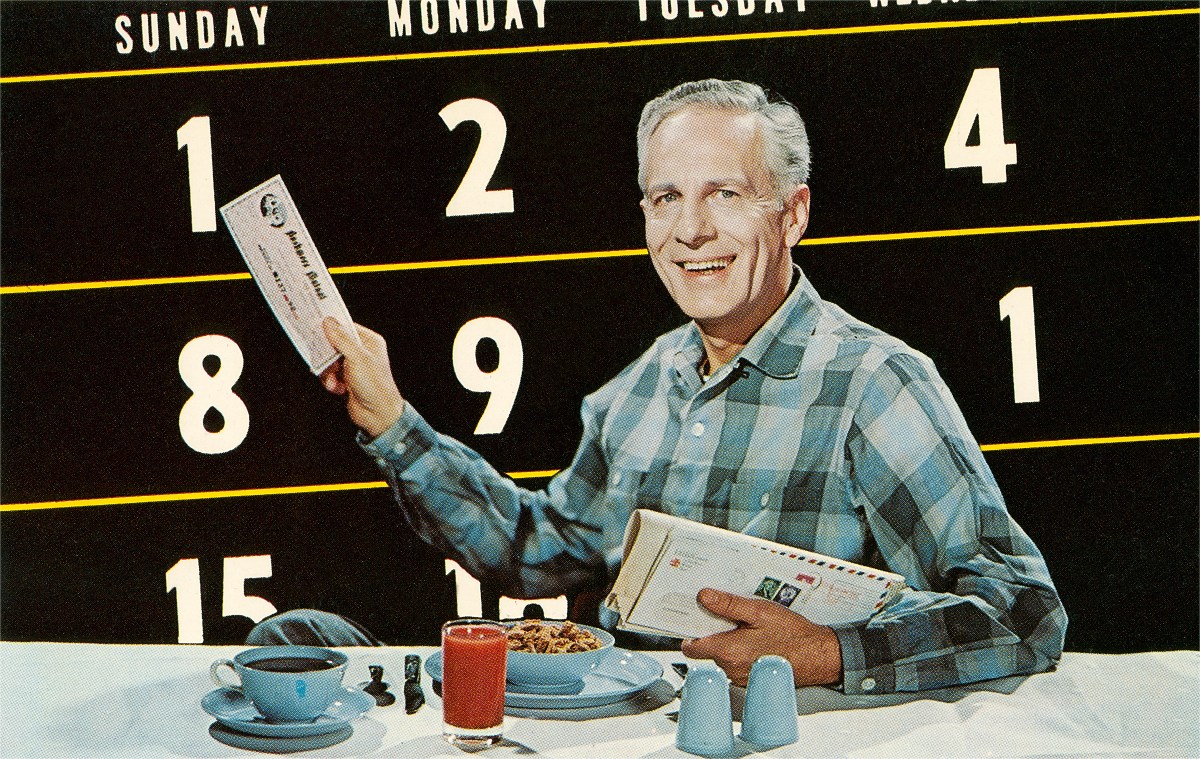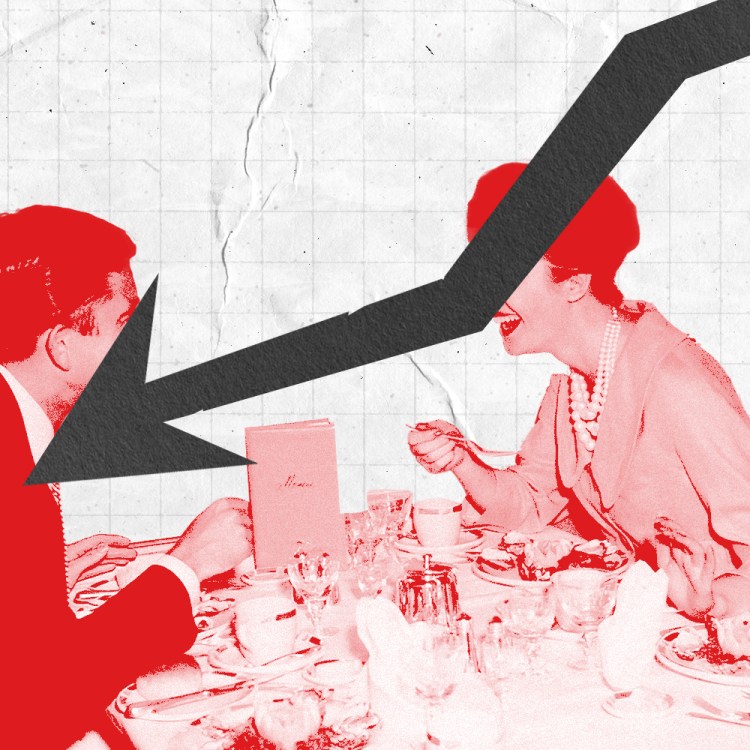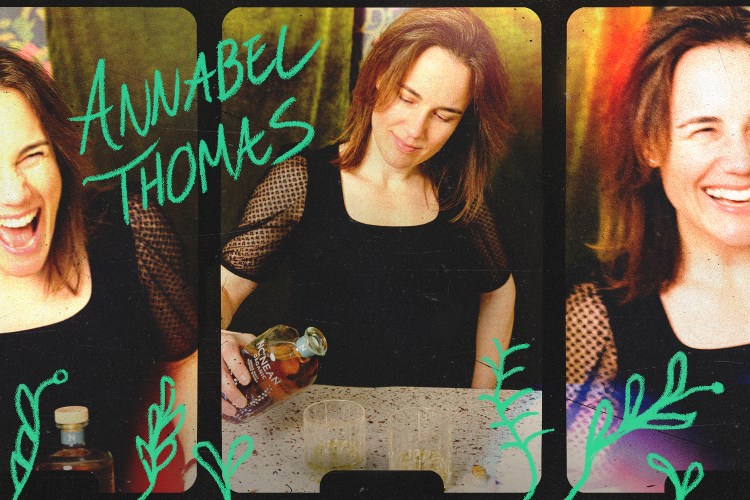In her book, Breakfast: A History, Heather Arndt Anderson wrote: “Advertising was practically invented to sell cereal.”
It was invented to sell the meal’s most sugary drink, too. In the early 1900s, the same man who conceived cigarettes as a dietary aid (“Reach for Lucky instead of a sweet,” marketed explicitly to women), Albert Lasker, turned his sights to citrus trees. “Drink an Orange” tripled the sales of oranges in this country.
We probably shouldn’t be too surprised if breakfast — with its backlog of sea captains and jungle cats — becomes an IP bluechip in the streaming wars, a la Mattel’s toy chest. And little wonder, with foodstuffs akin to candy and cola as the two pillars of a “quick,” 20th-century breakfast, that the meal’s other staples have gone through such a cycle of identity crises in the 21st century. Bread’s bad, bacon’s out, butter’s okay, bread’s back, etc.
As someone who spent portions of the 1990s and early aughts in health classrooms, I can attest: “Breakfast is the most important meal of the day” was once at war with “Stranger danger!” for most ubiquitous schoolroom advice. But by the 2010s, suddenly, the meal was nowhere to be found. Only 35% of respondents in a 2022 survey said they eat breakfast daily. And 44% said they eat it three times or fewer a week. What happened? Who’s right? Who’s wrong? How did we get here? And is there ever a good time to eat cereal?
If You Make One Nutritional Change This Year, Start Eating Seaweed
The ocean’s resident “green stuff” is here to save your health…and the planet’s, too16:8 vs. Breakfast
Various forms of time-restricted eating (fasts) have been around for forever. But intermittent fasting didn’t hit the mainstream until the 2010s, after years of proliferating on YouTube. Per usual, Silicon Valley played an outsized role — in late 2017, The Guardian ran an article titled: “The Silicon Valley execs who don’t eat for days: ‘It’s not dieting, it’s biohacking.’” By the end of 2018, it was the most popular fad diet in the world.
Breakfast — already embattled, due to its association with sugar, pastries and sausage links, what have you — was an inevitable casualty of this rise. The most popular form of intermittent fasting, the 16:8 method, calls for an eight-hour consumption window that many devotees position in the “middle” of the day. Say: 12 p.m. to 8 p.m. The strategy’s gotten some great press, is positively linked with weight loss and for many people, has made it easier than ever to shed breakfast once and for all.
Intermittent Fasting ≠ Exact Science
Amongst intermittent fasters, one’s ability to push their first meal all the way back to lunch has become a sort of badge of honor. It’s transcended the hybrid work era, too. Either you’re able stay disciplined throughout an entire morning commute (and in the face of an office with bagels in the kitchen, too), or you’re able to defeat the morning at the house without side-eyeing the toaster.
Lost in this development, though, is that (a) intermittent fasting is far from a perfect science, and (b) there’s actually nothing wrong with eating breakfast — especially if you’re reaching for good fuel sources.
As vanguard longevity research has exhibited in recent years, calorie restriction is critical for long-term health. It turns on genes that defend cells against diseases, and even aging itself. But there is no 100%-effective, one-size-fits-all method out there. The average American could stand to eat a little less — and be a bit more choosey about what they’re eating along the way — but that doesn’t mean you need to “fast” (the trend has a high dropout rate, surprise surprise). And doesn’t mean breakfast needs to be on the chopping block, either.
A Way to Start Your Day
In fact, many of us — and especially those who wake up with low blood sugar — should absolutely be eating some sort of daily breakfast. The meal acts a metabolic kickstarter; it’s less about filling your stomach, and more about fueling your body for the day ahead. Breakfast retunes the system from its nighttime fasting mode to a metabolic state that’s optimized for activity and energy expenditure. This powers your brain and muscles, ensuring you’re primed for either work or a workout.
This has a lot to do with sleep, too, believe it or not. When you eat at the same time each morning, you can “coach” your body’s internal clock to polish its sleep-wake cycle, which is just a podcast-y way of saying that hormones like leptin, ghrelin and cortisol will all balance out. Think: fewer mood swings or lunges for the snack drawer. A balanced attack throughout the morning that carries into the afternoon, consistent sleep time each night. Over time, ironically, this approach will likely give you a better shot at weight management than an intermittent fasting protocol.
If you generally feel scatterbrained in the morning, or just generally low energy, and you rarely eat breakfast (let alone throw back a smoothie), try plugging it back into your routine. This is also where breakfast’s benefits can make the leap from the biochemical to the ritualistic. Making time for breakfast — and fiercely protecting that space — could establish an improved framework for the rest of your morning, and the whole day ahead. You don’t need “plateful after plateful,” as Kellogg’s seemed so convinced of back in 1954, but just one, well-intentioned plate could make a huge difference in your day.
The New Breakfast(s) of Champions
What should those plates look like? By now, you’ve probably accepted that cereal is a construct and doesn’t deserve a place in your pantry…much less the bottom brick of the food pyramid.
In the morning, you want stuff packed with vitamins, minerals, protein, fiber, healthy fats, etc. Mix and match from the bank of breakfasts below. And when you’re traveling, or pressed for time — although some of these have “prep” optionality — you can always turn to a banana, nuts, or even nouveau muffins.
- Overnight oats with Greek yogurt, chia seeds, and mixed berries: This breakfast is packed with protein, fiber and antioxidants. Prepare it the night before.
- Avocado toast with poached eggs: Avocado provides healthy fats, while whole-grain toast provides fiber. Top it off with a poached egg for a protein boost.
- Green smoothie: Blend together spinach, a banana, Greek yogurt, almond milk and a spoonful of almond butter for a smoothie that packs in veggies, protein and healthy fats.
- Quinoa breakfast bowl: Cook quinoa in almond milk until it’s tender and creamy. Add in a touch of honey, some mixed berries and a sprinkle of almonds for a protein-rich start.
- Smoked salmon on a whole-grain bagel: As the the king of omega-3 fatty acids, salmon is the ultimate brain food. Add some cream cheese or a tomato if you fancy.
- Vegan tofu scramble with vegetables: Sauté tofu with bell peppers, onions, tomatoes and spices like turmeric.
- Breakfast burrito with black beans and scrambled eggs: Black beans offer fiber and protein. Add scrambled eggs, avocado and salsa in a whole-grain wrap.
The Charge will help you move better, think clearer and stay in the game longer. Subscribe to our wellness newsletter today.
























